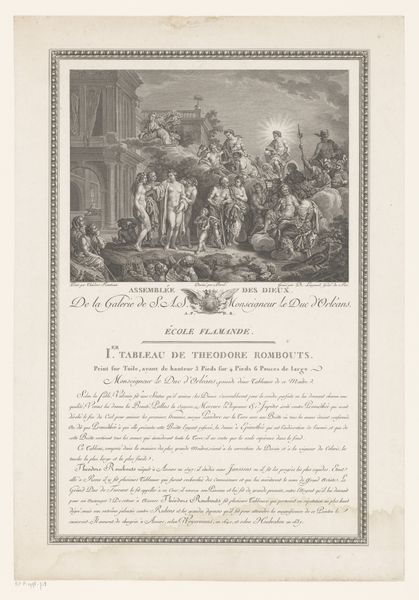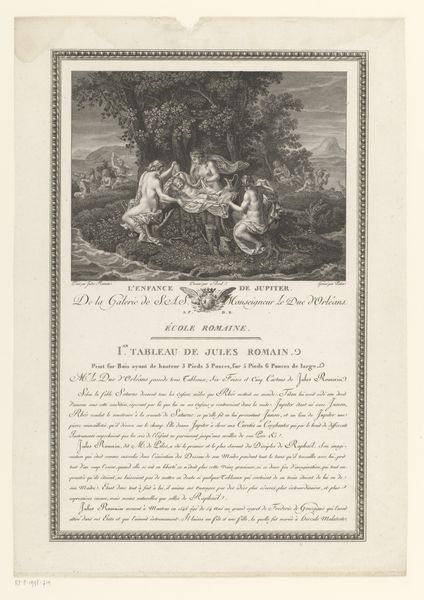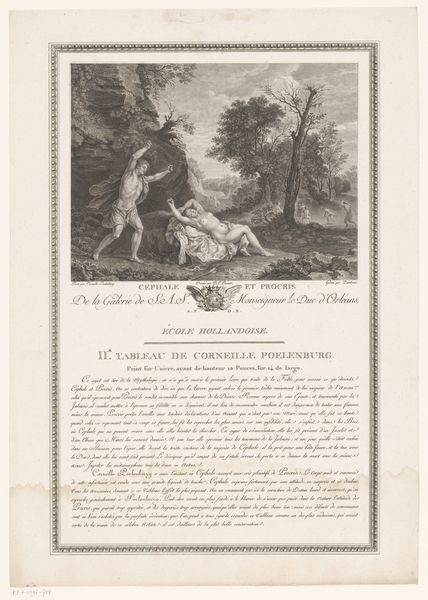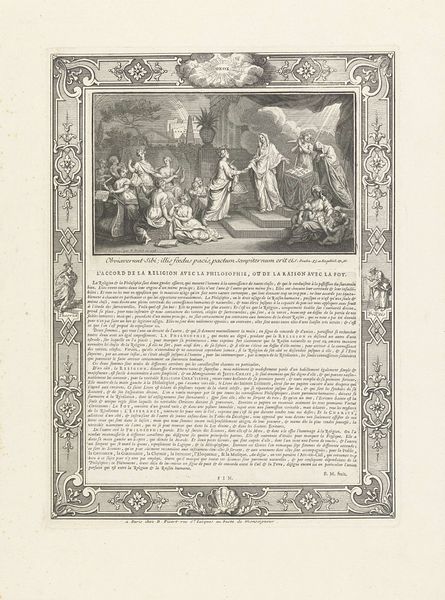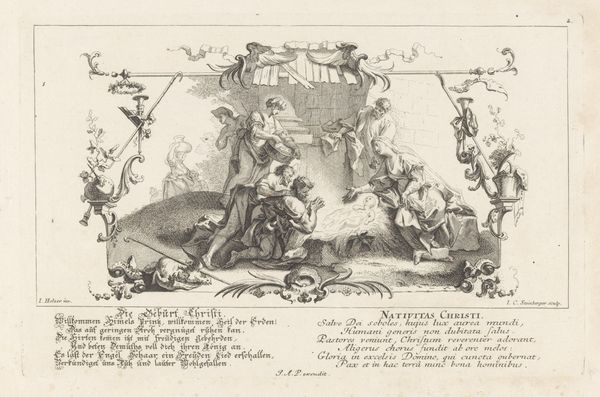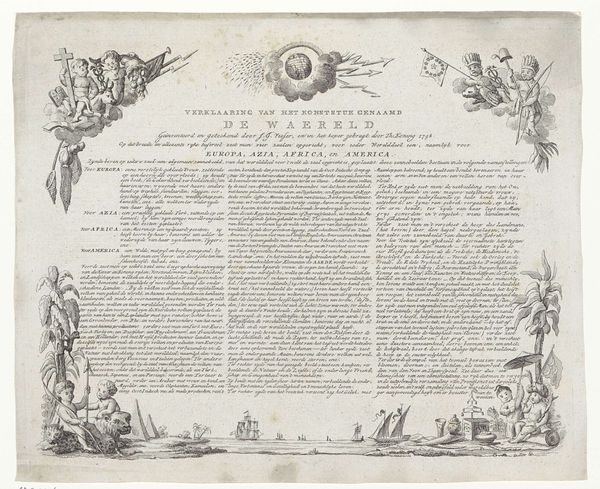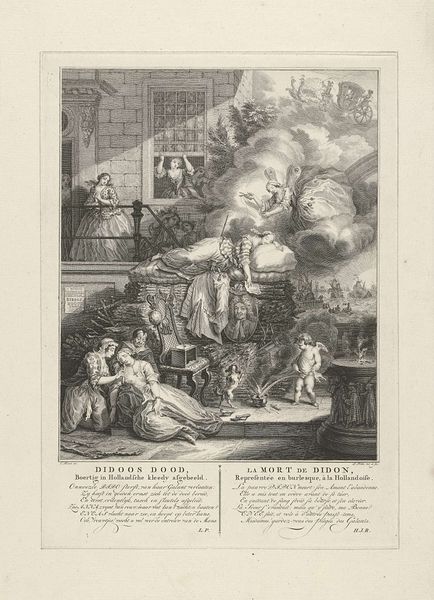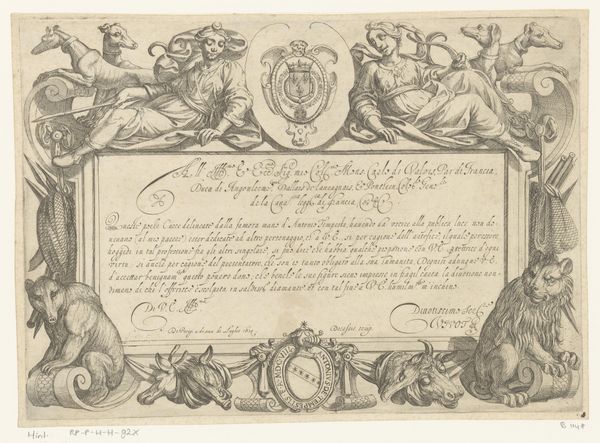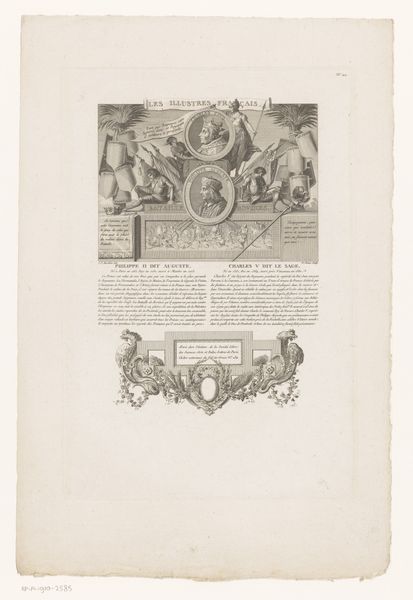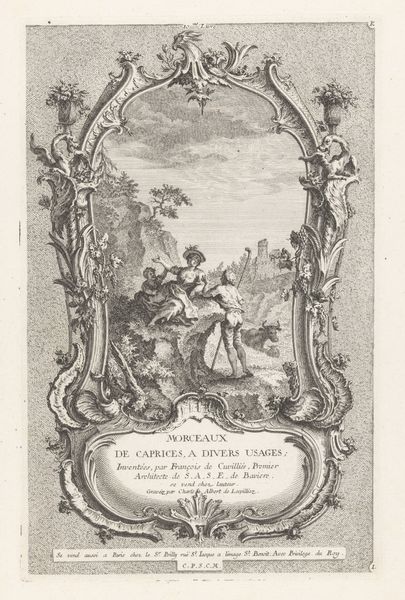
print, etching, engraving
#
neoclacissism
# print
#
etching
#
landscape
#
figuration
#
history-painting
#
nude
#
engraving
Dimensions: height 370 mm, width 240 mm
Copyright: Rijks Museum: Open Domain
Curator: The scene we're looking at is "The Birth of Bacchus" created between 1786 and 1808 by Jean Dambrun. It's a print, made using etching and engraving, after a painting by Nicolas Poussin. Editor: Immediately, I'm struck by its theatrical composition and, in contrast, the apparent classical coolness. Everyone is draped, reclining, gesturing – like figures arranged for a tableau vivant. The idealized nudes are, well, neoclassical. Curator: The work reflects a significant cultural moment – the rise of Neoclassicism. You see that embrace of classical forms and narratives emerging out of the enlightenment with a reinterpretation of mythological subjects through, what we see as modern eyes. Editor: The birth of Bacchus itself, as a story, carries significant weight. Born from Jupiter’s thigh, escaping Hera's jealousy, sheltered by nymphs...it speaks to resilience, survival, and a re-imagining of traditional narratives. There are multiple layers of female care here which, considering the political and gendered context of the late 18th century, could challenge accepted assumptions. Curator: That's interesting – you point to the subtle challenge to power structures through depicting a birth in mythological narratives. The use of idealized nudes is of course a key visual device too that invites contemplation, although in different times than when this artwork was new. Editor: Indeed, the bodies—arranged just so and displayed against lush scenery—demonstrate ownership of the mythological narrative for its wealthy consumers. The piece then takes on a new layer through Dambrun’s etching, it goes from Poussin’s classical subject to an invitation for ownership. The act of reproducing art became a way to circulate cultural capital. Curator: The original, by Nicolas Poussin, was already functioning within court circles as a symbol of refinement and power. Dambrun’s print makes that statement portable and distributable among an expanding consumer class with similar political views. The print becomes enmeshed in socioeconomic conditions. Editor: This print invites us to reflect on what we consider radical as history shifts. Here, a birthing scene amongst the Gods and Goddesses is reproduced by men who reinforce status. What seemed avant-garde and a step in thinking about life became itself another steppingstone, this time of elitist ideologies. Curator: A perspective worth embracing. Looking closer, one might see more, think harder, about representation across gender and societal layers—then, and now.
Comments
No comments
Be the first to comment and join the conversation on the ultimate creative platform.
